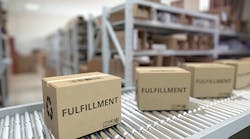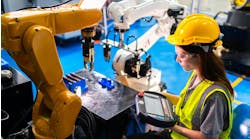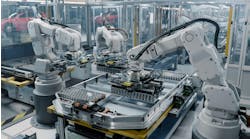Jeff Lake is vice president, new product introduction, and James Dawson is mechanical engineering manager at Peko Precision.
What sorts of sensing technologies have improved the effectiveness and reliability of picking systems and conveyance systems?
Also read: Warehouses continue to improve efficiency with collaborative robots, AMRs and AGV technology
Jeff Lake, vice president, new product introduction, Peko Precision: Some of the sensing technologies that have had an impact are laser, vision and ultrasonic.
James Dawson, mechanical engineering manager, Peko Precision: As computer systems continue to become more powerful and compact, vision systems are becoming more economical to implement. Coupled with machine-learning algorithms, vision systems can adapt to various conditions to increase throughput.
As warehouse distribution centers continue to grow larger, how are tracking and intelligence helping to keep up with customer demands?
Jeff Lake, vice president, new product introduction, Peko Precision: There is massive development of digital ecosystems to match cyber-space to real space/allocations in the physical world. The entire supply chain is becoming digitalized and mapped to control, analyze and ultimately optimize all aspects.
James Dawson, mechanical engineering manager, Peko Precision: The use of automated retrieval systems allows more flexibility in storage, allowing more efficient moves by the automated-guided-vehicle (AGV) system minimizing time from order to pick. This is possible by utilizing the digital connections through databases, analytics and machine learning.
Which technologies have allowed warehouses to increase throughput rates while expanding product ranges and still maintaining accurate order fulfillment?
Jeff Lake, vice president, new product introduction, Peko Precision: A full spectrum of methods and technologies has helped. Lean Six-Sigma manufacturing approaches, coupled with material-handling automation, robotics and logistics telemetry all contribute to optimization efforts. Accuracy is maintained or improved with the ability to have designed-in feedback loops for error detection and tracking, from basic automation sensing to final destination detection by GPS or signature loop.
Because of the warehouse’s physical nature, how much of the facility’s hardware can be replaced with software in order to facilitate easier upgrades, expansions and reconfigurations?
Jeff Lake, vice president, new product introduction, Peko Precision: The trend seems to head toward modularity of physical storage solutions, allowing quicker reconfiguration, optimization of space and overall improved matching of supply to demand. Software, artificial intelligence (AI) and digitization are allowing these physical/digital configurations to become more predictive to anticipate demand removing the classic reactive systems that merely fill orders. To this end, expansions and reconfigurations can be anticipated with less speculation and error.
How have automated storage and retrieval systems' roles changed over the past 10 years?
Jeff Lake, vice president, new product introduction, Peko Precision: Every aspect is more automated. Labor efficiency has grown significantly as the online economy flourishes. The automated storage and retrieval system (AS/RS) has moved from an optional optimization tool to a requirement to meet demand.
Will autonomous mobile robots replace automated guided vehicles altogether, or is there room for both, based on the application or complementary functions?
Jeff Lake, vice president, new product introduction, Peko Precision: In the short term, both will be needed. AGVs will probably have a better safety track record for larger equipment working closely with humans in the workplace. In most cases, the AGV is corralled by the guide or tether system employed. Think large forklifts. This guidance system has been shown to be robust and reliable to prevent error/accidents. In the long term, sensing technology coupled with increased onboard processing capability is quickly closing the gap. Automated guidance will most likely take over the market, due to ease of deployment, thus allowing autonomous devices to dominate the space. Regulatory and safety protocols along with a strong data set of success will be required to break down the final barriers of success. This is happening across the board from road vehicles to cobots in manufacturing.
How will ANSI/RIA R15.08 affect robotic solutions in warehouse environments?
Jeff Lake, vice president, new product introduction, Peko Precision: This will provide the guidance for the developing technology to address and mitigate the associated risks, allowing a set of best practices to be established and followed as the applications and market evolves.
Given the extraordinary percentage of manual operation in most distribution centers, will the 24/7 fully autonomous warehouse order-fulfillment center ever become commonplace?
Jeff Lake, vice president, new product introduction, Peko Precision: As with most solutions we tend to live in an 80/20 world. One can see that roughly 80% of the problems will be consistent enough to allow full automated fulfillment. These systems exist and are producing now. As the 80% is digested, these automated systems will absorb this content. There most likely will be 20% of exceptions that will need to be addressed in some shape or form by humans or semi-automated processes to meet customer, performance or business objectives.






